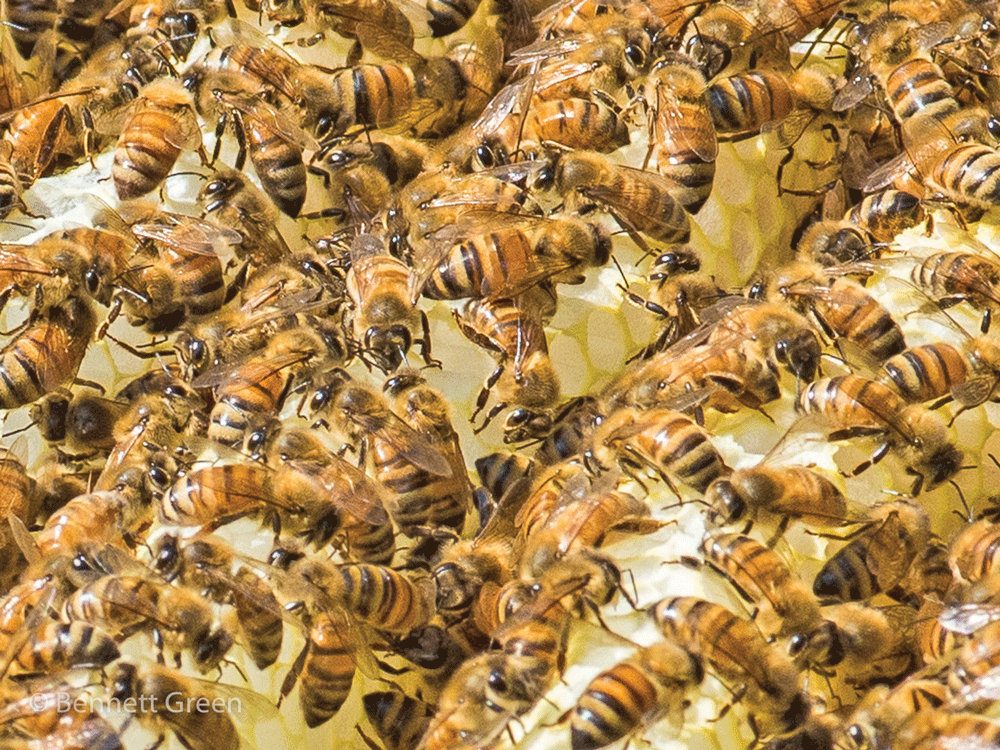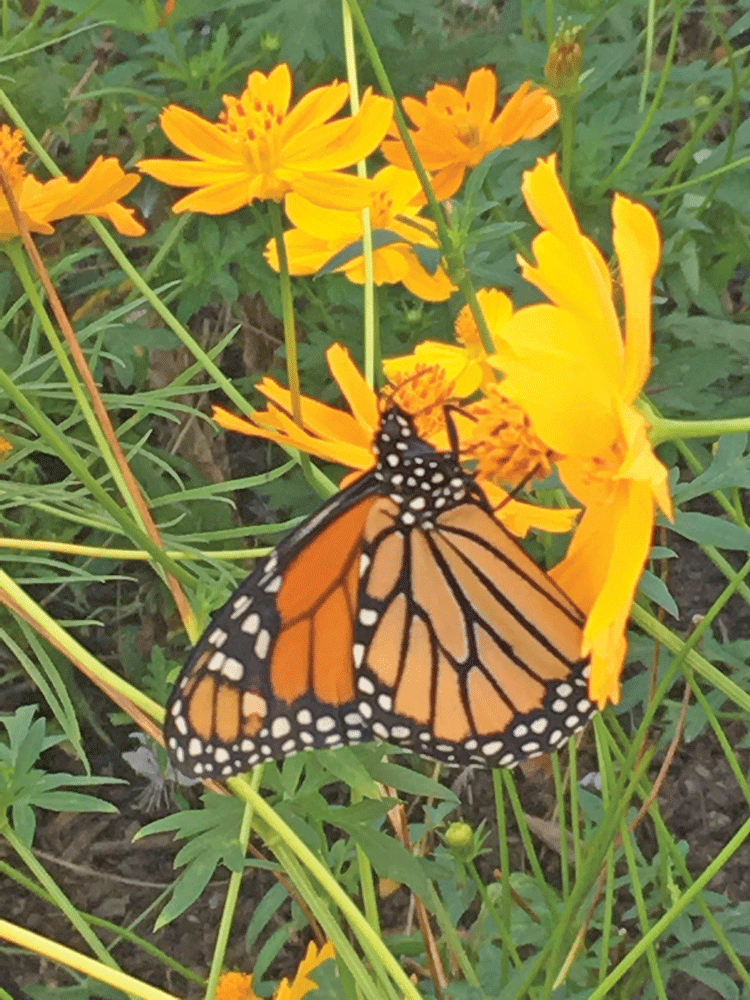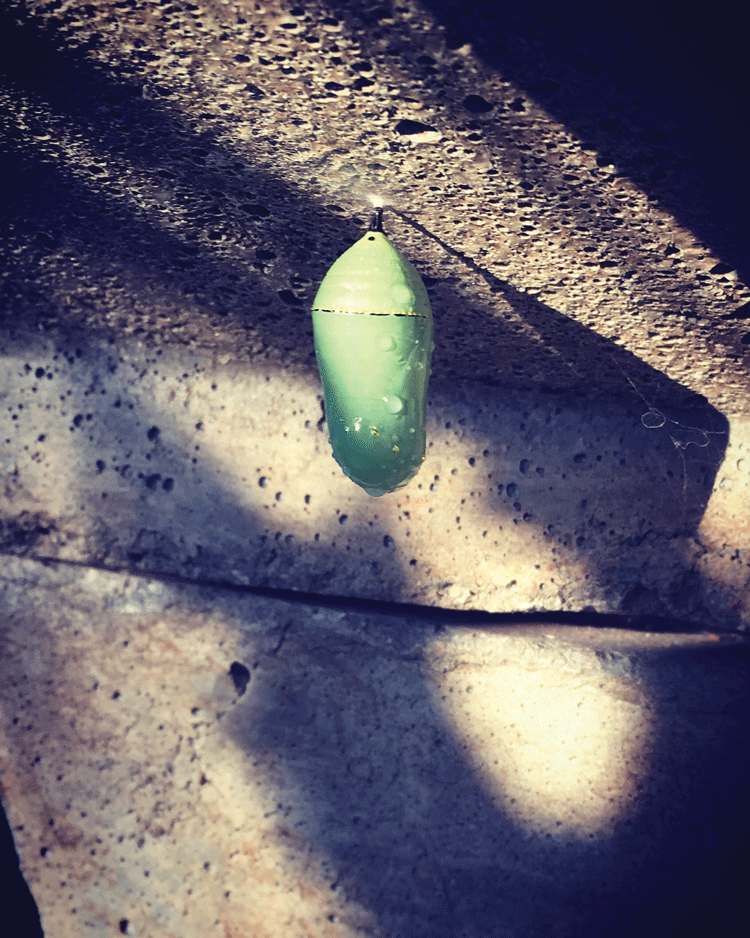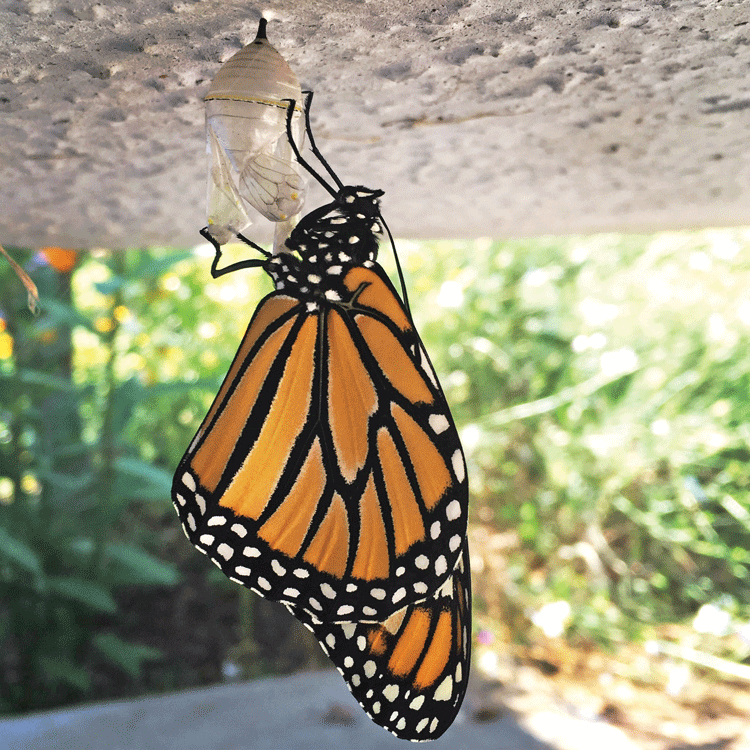Bee Food

By Ashley Boomer Singh
On our farm, the minute you exit your car, hungry mouths greet you. You’ll find the dog, the chickens, the cows, a chorus of animals wanting treats and attention. But other farm friends need our attention, too: bees, butterflies and various insects that make it all possible.
With tulips, daffodils and alliums poking through the soil and witch hazel blooming, my 4-year-old likes to run outside and report on progress. He shouts, “The bees are out, and they’re starving!” And he is right. After living off their stores in the long cold winter, bees are on the hunt for pollen and nectar.
Honey bees do some 80 percent of the pollination in the United States. In fact, from almonds, apples and avocado to watermelon, many of your favorite foods can only be pollinated by bees. By some estimates, one of every three bites you take depends on bees, and they are under unprecedented strain. Many colonies fail to survive each year.

The causes are complex, from the mysterious Colony Collapse Disorder that started in 2006 to viruses and parasites and the impact of pesticides. But you don’t have to be a beekeeper to help: Bees with diverse sources of nutrition do better, and even a small backyard plot can give local bees a better diet.
Bee food varies over the seasons. Right now, skunk cabbage, crocuses, hellebores and bush honeysuckle are their meal ticket. Soon maple and eastern redbud and cherry will be steady sources. Flowering quince, crabapple, apple, pear and linden trees are great for pollen and nectar too. But bees need a hand.
According to our neighbor and expert beekeeper Joan Gardiner, black locust trees, once a steady and preferred source of bee food in the Virginia Piedmont, are on the decline. “The black locust and sugar locust is not a popular tree, and developers tend to cut them down first,” she said. “But to the bees, it is their No. 1 forage.”

Locust nectar can be 50 percent sugar and vital for bees. In good years, the snow-white blossoms are alive and buzzing. Says Joan, “When the blossoms fall, and flowers gather like mounds of snow, the beekeeper can harvest this beautiful, light colored honey, as delicate and flowery in taste as spring itself!”
Joan introduced us to honey bees, and my husband diligently manages the hives under her tutelage. He learned to assemble hives and frames with her husband, John. Starting from one couriered shipment of bees from Georgia, we have had between one and four hives and harvested 50 to 85 pounds of honey each year. We were amazed to find that our first harvest of honey looked and tasted different from Joan’s, just a field away. Her “Unison Honey” is blond and rich while ours is dark and earthy.
Seeing Joan and my husband hard at work, I feel an obligation to feed these vulnerable pollinators who provide us so much. Most of the plants in our garden are bee and butterfly friendly. In the fall, we put in tulips, alliums, crocuses, hyacinths and snowdrops for spring nectar and/or pollen. And when the ground thaws, we ensure they have water sources and some special pollinator gardens.
Bee balm, yarrow and butterfly bush boast prolific blooms. Cosmos, cleome, dusty miller, Queen Anne’s lace, foxglove, heliotrope, sweet clover, marigolds and verbena are great sources of nectar, while dandelions, quince, sunflowers, chrysanthemums, thyme, mint and tulips are terrific for pollen. Lemon balm is a wonderful source of both pollen and nectar; we love it for tea.
Celosia, late in the season, is not considered a favorite of honey bees, but is popular with solitary bees and other pollinators. (And our ladies do frequent the fiery blooms.) We let herbs and many vegetables flower, which gives the bees food and gives our honey complex flavors. Fennel has beautiful yellow fireworks displays that I let bloom through fall. Carrots, asparagus, cucumber, melons and peppers all provide nectar, too.
With even a small space, you can plant pots on patios with bee friendly food. Two favorite patio combinations from David Lohmann, the owner of Abernethy & Spencer Garden Center in Purcellville, Virginia, and his spirited colleague, Frank Ellmore, look beautiful and taste great: Pineapple sage with diamond frost euphorbia and heliotrope or Victoria blue salvia with showstar melampodium and pentas.

Butterflies, especially the Monarchs, provide joy and wonder once you set up a milkweed garden. Monarchs need milkweed to lay eggs, nourish caterpillars, and feed after breaking free of their jewel-like chrysalis. “Got Milkweed” is a popular T-shirt at Abernethy. Try for a native variety like butterfly weed or common milkweed. It is magical to be a stopping point for the Monarchs on their multi-generation migration all the way from Canada back to Mexico.
The large yellow-striped butterflies you see in spring are tiger swallowtail, the state insect of Virginia. They crowd native Turk’s cap lilies. The native purple passion vine Passiflora incarnata, sometimes called maypop, is the swallowtail’s host. Zebra butterflies with the creamy white and black wings love the lavender in our garden, and all manner of butterflies love catmint.
Attracting beneficial insects such as ladybugs, lacewings, ground beetles and flower flies, wasps and spiders should also be a goal of your garden. Herb gardens are especially important for these critters, as the small flowers of dill, mint, chives, thyme, basil, oregano and fennel all provide food at different stages of the insect’s life. These insects will reduce the need for pesticides and do their best to eat the larvae of pests that can be problematic.
I am always inspired when I see schools creating special areas for the butterflies and bees. Children love to be outside, and seeing life bloom is magic in their eyes. One of our favorite family videos is of our son watching with wonder as a monarch emerges from its chrysalis.

The Abernethy team helps schools plant pollinator gardens that last well into fall when the children are back from vacation. Zinnias, bee balm, echinacea, rudbeckia, goldenrod and asters are great for summer and fall blooms. Registering these gardens with the Monarch Waystation Program or Million Pollinator Garden Challenge so kids can tag these winged creatures and help scientists understand the health of our monarch population is even more fun.
This year I like to think the bees and butterflies should have a feast all around our region. Whether in town, in the city or in the country, we all can do our part. ML


